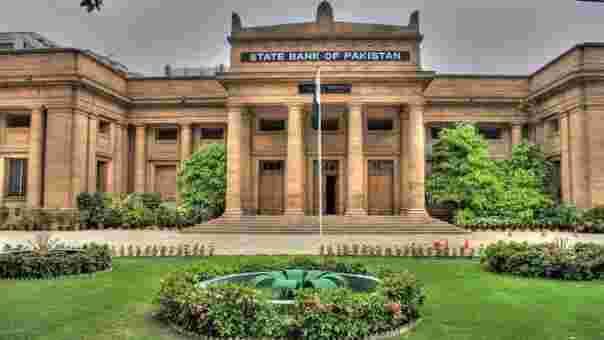Karachi, April 28, 2025 – The State Bank of Pakistan (SBP) on Monday released its Half Year Report FY25 on the state of Pakistan’s economy, highlighting several key risks that could impact the country’s future economic performance.
Among the primary concerns raised were rising tariffs, ongoing geopolitical conflicts, and the potential consequences of these global challenges on Pakistan’s economy.
The SBP stated that the macroeconomic outlook for Pakistan is heavily influenced by how the global economic and political landscape evolves. In particular, three major risks were identified. First, the increasing shift toward protectionist trade policies has started to have an effect. These tariffs are affecting key global trading partners and geopolitical competitors, potentially disrupting trade flows, economic activity, and remittance inflows. Additionally, higher tariffs could lead to changes in international commodity prices, which would further strain emerging market and developing economies (EMDEs) like Pakistan.
The second risk cited by the SBP is the possibility of spillover effects from ongoing geopolitical conflicts. These conflicts, both regional and global, could exacerbate economic uncertainty and volatility in commodity prices, significantly impacting global financial markets and, by extension, Pakistan’s economy. Third, the SBP expressed concerns about the resurgence of global inflation, spurred by tariffs and potential supply-chain disruptions. Such inflationary pressures could negatively affect global financial conditions, with severe implications for emerging economies such as Pakistan, which is already managing fiscal and monetary challenges.
Despite these risks, the SBP’s report noted that Pakistan’s macroeconomic conditions showed improvement during the first half of FY25. Key indicators, including a sharp decline in inflation, a surplus in the current account balance, and a reduction in the fiscal deficit to its lowest level since FY05, pointed to positive economic developments. The report attributed these improvements to a combination of factors, including a disciplined monetary policy, fiscal consolidation, and favorable global commodity prices. Additionally, Pakistan’s credit rating upgrade by international agencies reflected growing confidence in the country’s economic outlook.
The report also highlighted the significant reduction in inflation, which fell to a multi-decade low of 0.7% by March 2025. This decline was driven by tight monetary policy, fiscal controls, and improved supply conditions. The SBP reduced its policy rate by 1,000 basis points between June 2024 and February 2025, which helped stimulate growth in private sector credit.
However, the SBP noted that real GDP growth had moderated due to challenges in the agricultural sector and a slowdown in industrial production. The decline in Kharif crops, driven by adverse weather and policy uncertainties, negatively affected overall growth. On a positive note, the services sector showed better performance during the first half of FY25 compared to the same period last year.
In the external sector, a steady rise in exports and remittances, combined with a surplus in the current account balance, contributed to an improvement in SBP’s foreign exchange reserves. The report also discussed productivity growth as a critical issue for Pakistan’s long-term economic competitiveness. Addressing macroeconomic and structural constraints is vital to ensuring sustainable growth.
Looking ahead, the SBP projected average inflation for FY25 to be in the range of 5.5% to 7.5%, with GDP growth expectations remaining between 2.5% and 3.5%. Despite improvements, the SBP cautioned that the global economic risks, especially trade disruptions and geopolitical tensions, could undermine the country’s recovery and growth prospects.
